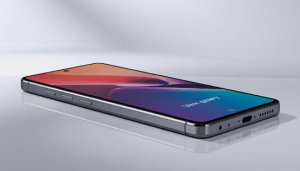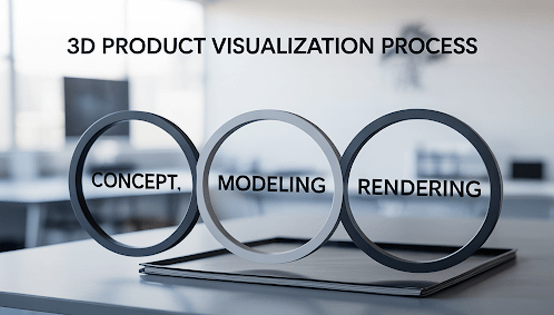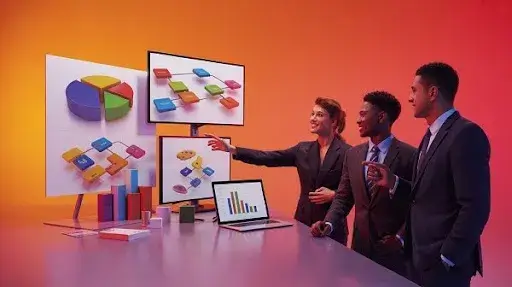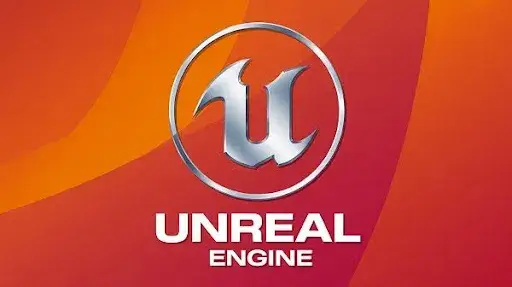E-commerce has changed how people shop, but it hasn’t solved a fundamental issue: the lack of physical interaction with a product. Standard images don’t deliver enough insight, and customers are left guessing. That uncertainty causes hesitation and lost sales.
This is where 3D product visualization comes into play.
It’s no longer a tech trend or futuristic gimmick. It’s an essential experience enhancer for brands wanting to replicate the feel of physical shopping in the digital world. From zooming in to rotate, flipping angles, and placing products in real-life environments, 3D product visuals fill in the gaps that traditional images can’t.
If you’re still relying on static photography in a highly visual commerce battlefield, you’re giving your advantage to competitors who already understand how 3D product visualization enhances online shopping.
Let’s break down what makes this technology necessary, not a luxury.
What is 3D Product Visualization?
To describe 3D product visualization simply, it’s the creation of three-dimensional digital representations of physical products using computer-generated imagery (CGI), modeling, and rendering.
These visuals are interactive. Customers can zoom in, rotate the object, examine textures, and even view the product in augmented reality (AR) within their personal spaces. It’s the closest thing to holding the product without being in a store.
Here’s how 3D product visualization works:
- High-resolution 3D models are created using CAD files or product imagery.
- Lighting, shadows, and real-world materials are digitally replicated.
- These models are integrated into websites, AR systems, or mobile apps.
- Customers interact in real-time, turning curiosity into conversions.
Why Static Images No Longer Cut It
With growing screen time and mobile browsing, the average user forms an impression in less than 50 milliseconds. A flat image just doesn’t communicate enough.
The limitations of traditional photos:
- Only show fixed angles.
- Can’t capture texture, depth, or material authenticity.
- Often require costly reshoots for every color, variant, or scene.
The Top Benefits of Utilizing 3D Product Visualization
1. Amplifies Customer Confidence
With 3D product visuals, buyers feel more in control. They can explore every element: zoom in, spin, and inspect from all sides. This dramatically reduces returns and increases satisfaction.
Stat to know: According to a study by Shopify, products with AR/3D experiences saw a 40% higher order conversion rate than those without.
2. Reduces Product Returns
A major reason for return is that the product “looked different from the website.” 3D product visualization bridges this gap by offering a transparent, detailed visual representation of the item, leaving fewer surprises upon delivery.
3. Cuts Down Photography Costs
No need to organize product photoshoots every time you change a variant or release a new color. One 3D model can be digitally re-skinned, recolored, and repositioned endlessly. That’s massive savings on logistics, models, and post-production.
4. Speeds Up Time-to-Market
Launching new products becomes lightning-fast. With CGI models, you can begin marketing before the product is manufactured.
5. Open to New Ways to Immersive AR Capabilities
AR and 3D go hand-in-hand. Want to let users try on glasses, place a sofa in their living room, or test a watch on their wrist? We do 3D product visualization that enables this seamless integration.
Read also: Top 5 Biggest Animation Companies
How Industries Contribute to the 3D Visualization Development
While product visualization services are applicable across sectors, some industries have fully embraced them:
Home & Furniture
Brands like IKEA and Wayfair are using 3D and AR to help customers view furniture in their rooms. This removes size guesswork and design mismatch.
Fashion & Apparel
Try-before-you-buy is no longer limited to stores. 3D avatars and try-on tools are making clothing previews online just as powerful.
Automotive
Car brands showcase detailed interiors, custom configurations, and driving simulations through 3D visualization.
Health & Beauty
Beauty brands leverage high-res product visuals to reduce hesitation, from makeup previews to dental product fittings.
3D Product Visualization in the USA
3D product visualization in Texas and 3D product visualization in Los Angeles are growing hotbeds for creative tech solutions.
3D Product Visualization in Dallas
Dallas is fast becoming a hub for visual-tech innovation. Brands here are utilizing 3D modeling for everything from real estate to retail. Dallas’s digital infrastructure and creative economy make it a fertile ground for 3D visualization benefits.
3D Product Visualization in Los Angeles
LA’s media and design industries are blending AR and 3D visualization for immersive product storytelling. From fashion tech startups to Hollywood studios, product visualization in the USA is taking new forms thanks to these industries.
What Makes 3D Product Visualization Services Imperative for Brands
You can have the best product, but your sales will too if the presentation falls short.
- Compete with global brands without massive budgets.
- Improve the clarity of product communication.
- Personalize the shopping journey.
- Extend digital reach via AR-ready assets.
Frequently Asked Questions
What is 3D product visualization?
It’s the process of creating interactive, hyper-realistic digital models of physical products for use in eCommerce, AR, and marketing.
How does 3D product visualization work?
Using advanced software, designers build a 3D model that can be viewed and manipulated online. These visuals mimic physical properties like light, material, and texture.
Is 3D product visualization better than photography?
For many use-cases, yes. It’s scalable, cost-effective, and versatile. Plus, it offers interactivity that photos can’t.
What industries can use 3D product visualization?
Furniture, fashion, automotive, health, tech, and more. If you sell a product, 3D visualization can upgrade how you showcase it.
Can customers share 3D models online?
Absolutely. Many eCommerce platforms support shareable 3D content that encourages user-generated buzz.
3D Product Visualization Process Breakdown
Creating visually immersive product representations isn’t a plug-and-play process. It involves expertise, collaboration, and digital expertise. Here’s a quick breakdown of the pipeline that makes 3D product visualization possible:
1. Data Collection & Reference Gathering
It starts by gathering every detail about the physical product, including dimensions, materials, finishes, and functionality. CAD files, sketches, and photos help define the visual roadmap.
2. 3D Modeling
A digital version of the product is sculpted using software like Blender, 3ds Max, or Maya. Every curve, bolt, seam, or texture is captured with pixel-level accuracy.
3. Texturing & Material Definition
High-resolution textures are applied to simulate materials like fabric, glass, leather, or metal. Lighting and shading are also created to give realism under various conditions.
4. Rendering & Optimization
This is where the visuals come to life. The model is rendered as still images or interactive 3D files and optimized to work across browsers, apps, and AR platforms.
5. Integration
Finally, these assets are integrated into your eCommerce platforms, mobile apps, or virtual catalogs. They’re tested across devices for smooth interaction and loading.
How 3D Product Visualization Supports eCommerce
The eCommerce boom has created a battlefield for attention. If you want to win hearts and wallets, 3D product visualization in eCommerce gives you the upper hand.
Let’s explore why:
- Customers shop on the go. A 3D product model responds better to swipes, taps, and zooms than a flat photo.
- The more customers interact, the longer they stay, which boosts conversion chances.
- Confidence in seeing every angle removes doubt and increases sales velocity.
A report by Threekit highlighted that retailers using 3D product visuals saw a 40% reduction in product returns and a 30% increase in sales.
3D Visualization Makes Sales Generation Effortless
Let’s focus on outcomes. It’s not just about looking good, it’s about boosting numbers.
Brands See Higher Conversions
3D product visuals lead to a more informed buyer, directly increasing sales. When customers feel assured about what they’re buying, they’re more likely to complete the purchase and less likely to return it.
Improved Upselling and Cross-Selling
Interactive models let you display product bundles, add-ons, or premium upgrades more enticingly. You can showcase color variants or premium features dynamically without overwhelming the layout.
Lower Marketing Costs
Once your 3D asset is built, it can be reused in digital ads, emails, product pages, and AR apps, maximizing ROI across channels.
3D Product Visualization and Personalized Marketing
Modern marketing is all about personalization, and 3D makes it easier. Here’s how:
- Send tailored 3D previews based on browsing history.
- Let customers visualize their chosen specs in real-time.
- Sync 3D models into AR filters or virtual try-ons.
3D Product Visualization Role in B2B Sales
While eCommerce leads the charge, B2B industries benefit just as much from 3D product visuals. Key benefits for B2B:
- Ideal for trade shows and investor meetings.
- Showcase moving parts, internal components, and product functionality.
- Use interactive 3D models to train employees or distributors.
Myths About 3D Product Visualization
Let’s bust a few misconceptions that hold companies back.
It’s too Expensive
Compared to the cost of repeated photoshoots, models, props, and edits, 3D is more affordable long-term.
It’s Only for Large Enterprises
Software and the freelance market make it accessible even for small eCommerce shops and startups.
It’s too Technical for My Team
Agencies like Prolific Studio handle the entire process. From modeling to integration, making it smooth and effortless for brands.
Tools and Software Behind 3D Product Visualization
Several industry-standard platforms are driving the 3D movement:
- Blender – Open-source and highly flexible.
- Autodesk Maya / 3ds Max – Preferred by many professionals for detailed modeling.
- Adobe Substance – Powerful texturing and material software.
- Unity / Unreal Engine – For real-time rendering and interactivity.
- WebGL & Three.js – Helps bring 3D to browsers for web-based experiences.
Choosing the Right 3D Visualization Partner
Not every studio can deliver product visuals that convert. Here’s what to look for:
- Do they have industry-relevant samples?
- Are their models textured accurately, or do they look artificial?
- Do their assets load quickly across mobile and web?
- Can they tailor assets to your brand tone and aesthetic?
Final Words
In a digital-first, visually-driven marketplace, static images are relics. Buyers want to explore, interact, and experience before clicking “add to cart.”
From faster conversions and lower return rates to immersive shopping experiences, the top benefits of utilizing 3D product visualization are undeniable. And if you’re serious about increasing sales with 3D visualization, partnering with the right team is non-negotiable.
Ready to upgrade your product visuals? Contact Prolific Studio today, and let’s create a visual experience your customers will remember and buy into.
Other Relevant Reads:











